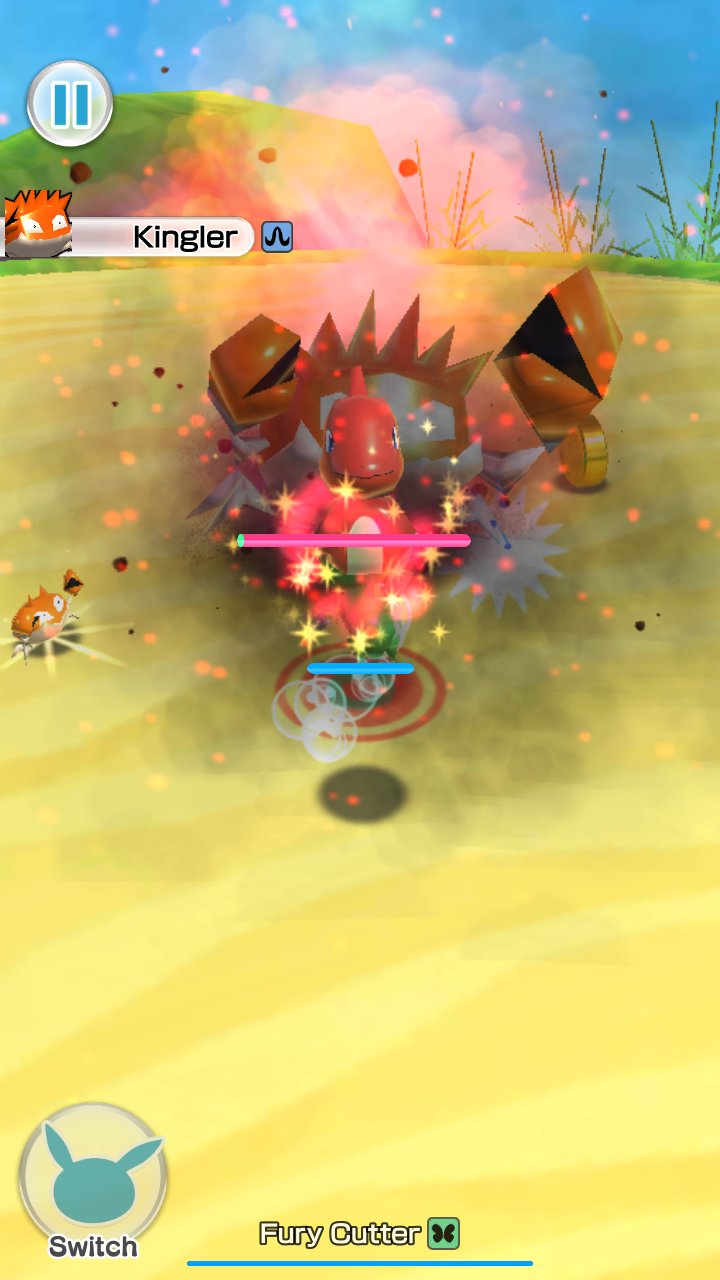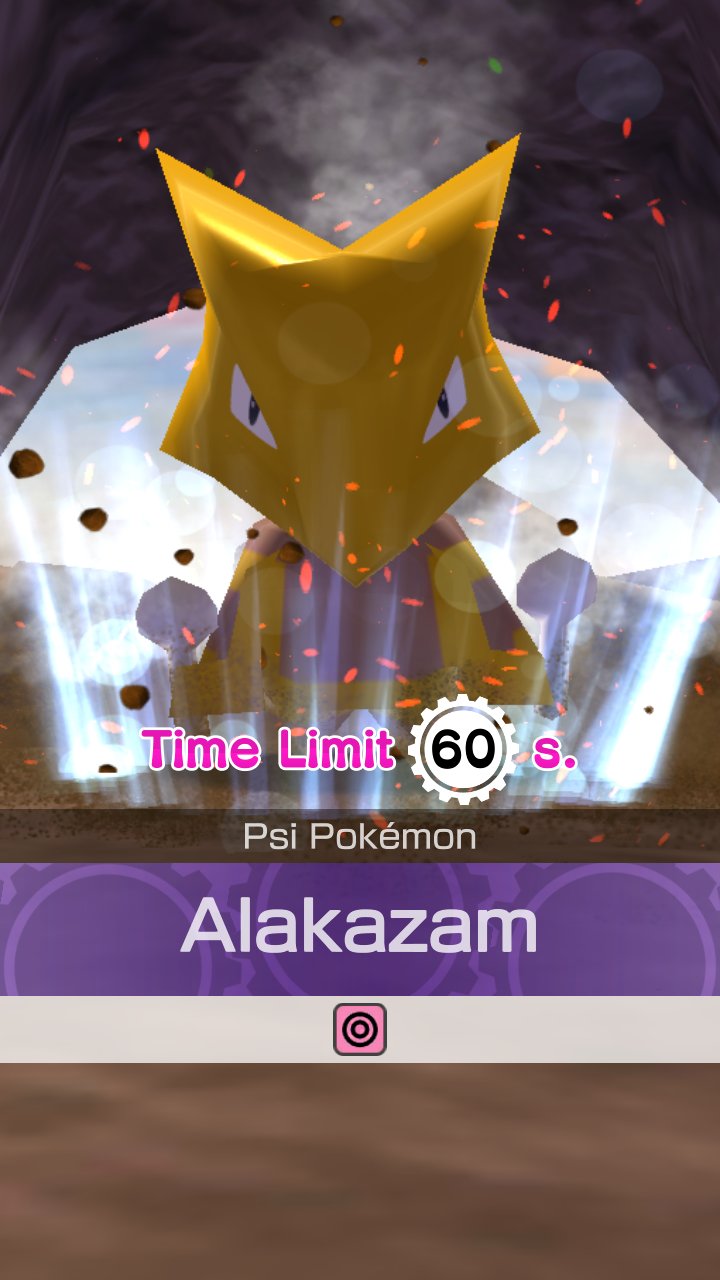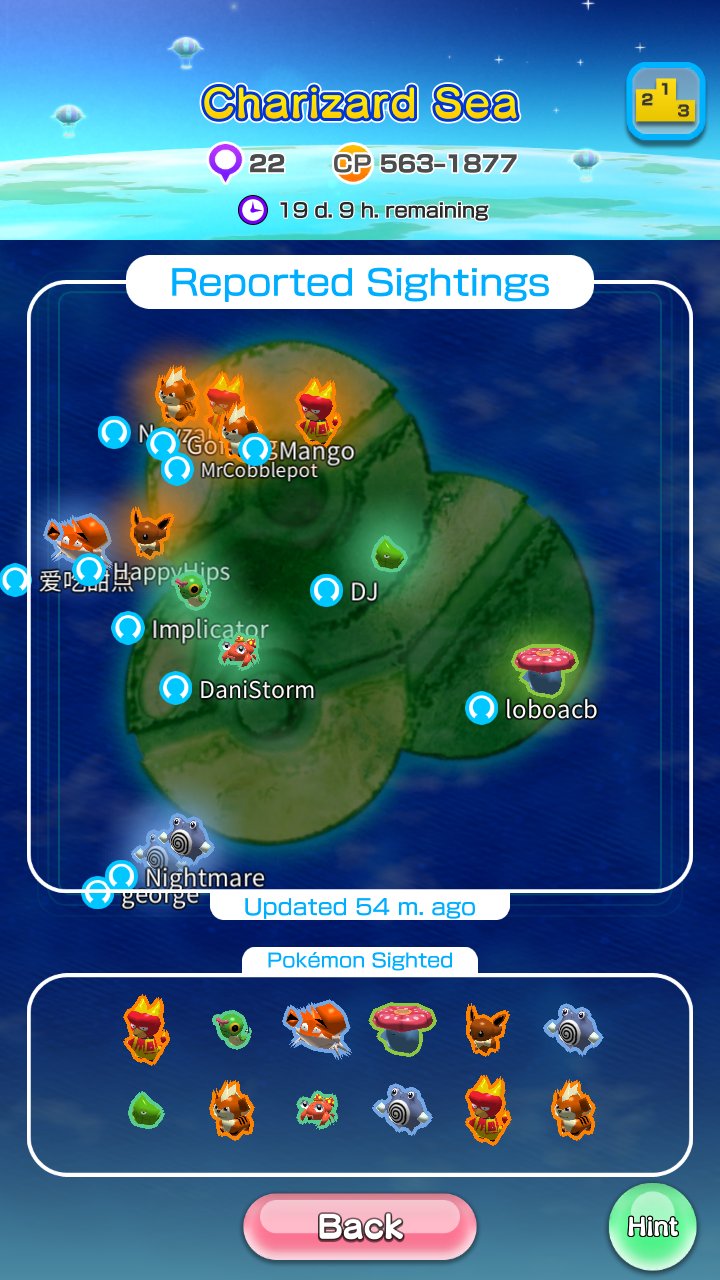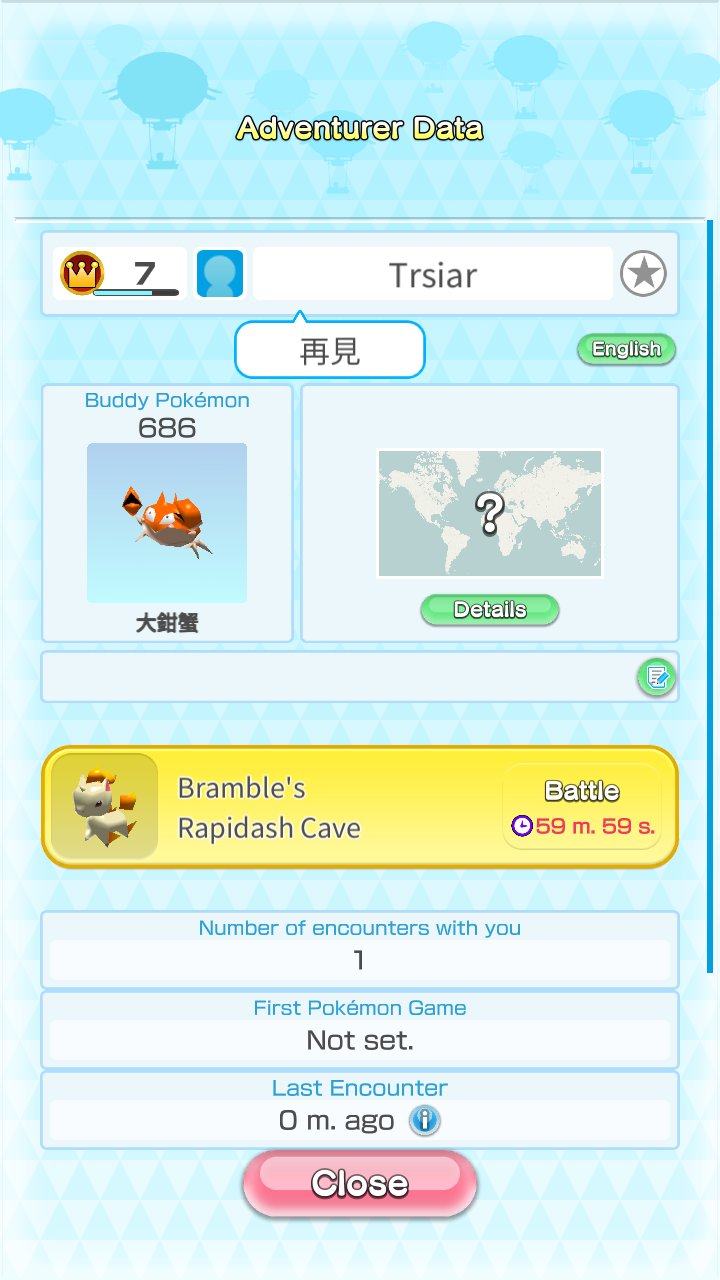Pokémon Mechanics
Like the previous Pokémon Rumble games, you control Toy Pokémon going through stages. However, Pokémon Rumble features a variety of changes and slight differences to the previous games. This page is to detail all the changes and updated mechanics.
Pokémon Related Mechanics
Playing Stages |
|||||||||
As with previous Pokémon Rumble games, you go through the stages with your Toy Pokémon. In this game, the stages are a fair bit smaller than the previous games. While the other games had stages with multiple floors to explore, this game provides a narrow path with wild Pokémon spawning throughout. This is due to the mobile interface. With a lack of a D-Pad or any directional input, your Pokémon will automatically move throughout the stages and will head towards the nearest Pokémon. After the Tutorial, the Pokémon will also automatically attack the opponent. However, this does not mean there is no control method. By tapping the screen, you can command the Pokémon to attack, far more frequently than automatic attacks. In addition to that, you can dodge out of the way of an opponent's attacks by swiping the touch screen. |
 |
||||||||
Catching Pokémon |
|||||||||
Like almost all Pokémon games, the aim here is to get Pokémon. In this game, when you defeat the opponent there is a random chance that it'll drop and be picked up as a Pokémon for you. Sometimes, a Pokémon will get wobbly after an attack. If you knock it out, it's a guaranteed capture. In addition to this, you may also see some Pokémon with random sparkles. If you defeat them, then you also have a guaranteed catch When you catch a Pokémon, certain elements are decided for it and you'll be able to tell based on the aura the knocked out figure has.
The Gear slots, CP and moves of a Pokémon cannot be changed and the CP of Pokémon you encounter increase with each Super Boss you defeat. As you catch a Pokémon, it will count to the species rank level. Every 10 Pokémon you catch, or every 100 after Rank ☆10, every 250 after Rank ☆20, every 500 after Rank ☆30 will cause your species rank to increase. As the rank increases, you will get higher CP of that species more often when you obtain one. |
 |
||||||||
CP (Combat Points) & Stats |
|||||||||
Like Pokémon GO and Pokémon Let's Go, CP makes a return in Pokémon Rumble Rush. However, in this game, rather than be a calculation of the various stats, a Pokémon's CP is literally its Attack stat. It also has a Defense Stat and Hit Points stats as well as a Critical Hit ratio These stats can't be changed and your Pokémon remains as it was caught. They can, however, be augmented using Gears. Various gears can boost stats, most notably attack if you have a certain move type. A Pokémon can have one or two Gear slots for Power Gear. |
 |
||||||||
Summon Pokémon |
|||||||||
Another new feature of Pokémon Rumble Rush is the Summon Pokémon. One kind of Gear that can be obtained is a Summon Gear and each Pokémon has a slot for it. When you put a Gear in this slot, as you defeat Pokémon you have a gauge that fills up. When the gauge is full, you can tap the button and it will summon a Pokémon to unleash an attack. |
 |
||||||||
Super Boss |
|||||||||
In previous Pokémon Rumble games, you'd encounter bosses at the end of each stage, however this game adds a new kind of boss, the Super Boss. These appear in the game's islands and in the Tournaments and provide an even tougher challenge. These bosses have got a timer and have a few more moves at their disposal. They can charge at you, doing significant damage, or they can put up a protective barrier which requires a powerful charge move, or your Summon Pokémon, in order to break. |
 |
||||||||
Stage Mechanics
Finding Stages |
|
Getting to a new stage is not an exact science in this game. Instead of selecting a stage, you need to find it. To do this, after defeating a boss you will often find a Guide Feather will drop. A Guide feather can be used to place on the map to find a stage. This is a largely random feature and going in blind would be very tricky. However, there is a feature that helps. When you go on the map to place the Guide Feather, you'll see a list of 12 reported areas from other players who have been playing the game recently. This shows the sort of area you can go to get a certain Pokémon. Stage locations are set so if a player has found and claimed a stage, you'll be able to find it in the same position, but every day the unclaimed stages will rotate and change contents and even co-ordinates. Stages also come in various rarities. These come in one to five stars and the more stars it has, the rarer and stronger the Pokémon it contains. For example, in a one star stage you'd typically find Pokémon such as Caterpie but in a five star stage you'd find Magmortar. If you're out of Guide Feathers, you can play through the last 3 stages you have been in, or you can save one you may wish to visit again without it being pushed off by other stages you visit Note: The stages change every two weeks |
 |
Other Players |
|
When on the map, you will sometimes find the air balloons of other players floating around the stage. If you tap the balloon, it'll load up that player's profile showing their name, rank, language, profile, location and buddy Pokémon, but there is another features With this, you will be given 60 minutes from the interaction to go through their favourited stage. Doing so includes their Buddy Pokémon as an ally. It may also allow you to explore caves featuring Pokémon that you haven't unlocked yet. |
 |
